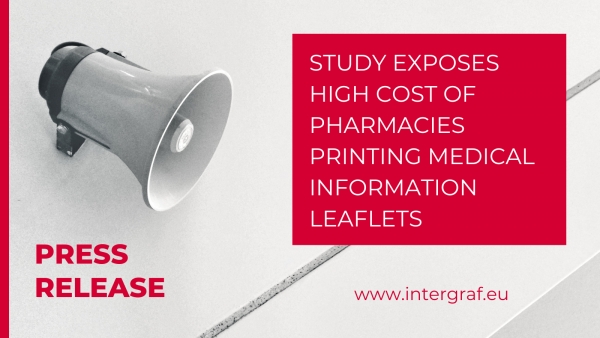18 February 2020

Are you claiming your R&D tax relief?
The Research and Development (R&D) tax credit was introduced in 2000 and is a generous tax relief supported by HMRC as a way of rewarding UK businesses for undergoing innovative development in their company. In October last year HMRC released their updated R&D statistics which showed a clear image of the industries that are claiming R&D credits. From these statistics it is evident that the printing industry is significantly under claiming compared to other industries and we think the two reasons for this are:
1) That most businesses don’t believe that they qualify for the relief and;
2) Some believe that the claiming process is too complex.
However, in reality a lot of print activities can be classed as R&D and they don’t necessarily involve the stereotypical ‘white lab coat’ to be classed as this.
Once you have ascertained which projects qualify for the tax relief, the next step is to quantify the costs that can be included in the claim. HMRC have specific cost categories as to what costs can be included in the claim:
-
Staff costs (including Salaries, Employer’s NIC & Pension Contributions)
-
Subcontractor costs (Restricted to 65% for unconnected sub-contractors)
-
Externally provided workers (Restricted to 65%)
-
Software license costs
-
Cost of consumable items (Items consumed, transformed or destroyed in the R&D process)
Different rates of tax relief
There are two different rates of tax relief, one aimed at SME’s and the other aimed at large companies. The tax saving for SME businesses equates to around 25p for every £1 spent on R&D. It is a complex calculation an SME receives an additional 130% super deduction which is applied to the above cost categories that relate to R&D activities. This is effectively an additional deduction in calculating a company’s taxable profits (hence reducing the corporation tax bill). If the R&D relief creates a loss for the business, then the losses that are created can be swapped for a refund of 14.5% of the losses that arose. The tax saving for large companies is slightly different; large companies are paid a 12% taxable tax credit based on their qualifying R&D expenditure.
The BPIF R&D partner has saved UK print companies almost £1 million in R&D tax relief over the past 2 years.
Within the printing industry technology is progressing at a phenomenal rate. This progression frequently constitutes R&D for tax purposes and examples of qualifying R&D in the printing industry include:
Software development
As print companies develop their software this can often result in an advance in computer software technology. For example, combining your pre existing technology with an off the shelf technology can often be extremely complex.
Experimentation with different substrates and inks
Experimentation with the methods of printing is a good example of R&D in the printing industry, this experimentation with different substrates and inks enables businesses to offer unique and innovative new products for their customers. The science behind this can often mean companies have to undertake huge amounts of trial and error.
Developing and adapting new print machinery
Due to the technology within the printing industry progressing at a fast rate it is important for businesses in this sector to continuously find ways of improving their production methods. This could be purchasing a new piece of equipment and developing it to fit into the production process or it could be making significant improvements to older equipment and ensuring they perform better than they had before.
Research and Development tax reliefs are still a complex area, so we recommend you seek advice from a tax professional. Contact BPIF Specilaist Services with any questions raised from this article, [email protected]
 Intergraf Economic News (Paper Prices) - March 2024
Intergraf Economic News (Paper Prices) - March 2024
18 March 2024
Access the latest edition of the Economic Newsletter for the European Printing Industry for data on paper consumption, and pricing data for pulp, paper and recovered paper. Data for packaging papers and board is also available with this edition.
 STUDY EXPOSES HIGH COST OF PHARMACIES PRINTING MEDICAL INFORMATION LEAFLETS
STUDY EXPOSES HIGH COST OF PHARMACIES PRINTING MEDICAL INFORMATION LEAFLETS
7 March 2024
Intergraf welcomes the release of a study by our partner MLPS (Medical Leaflet = Patient Safety), a subgroup of the European Carton Manufacturers Association (ECMA) shedding light on the potential economic costs associated with the proposed use of Print on Demand (PoD) leaflets in the pharmaceutical legislation revision.

The BPIF is the printing industries champion. By becoming a member you join a diverse and influential community. We help you solve business problems, connect you to new customers and suppliers and make your voice heard in government.
Call 01676 526030









